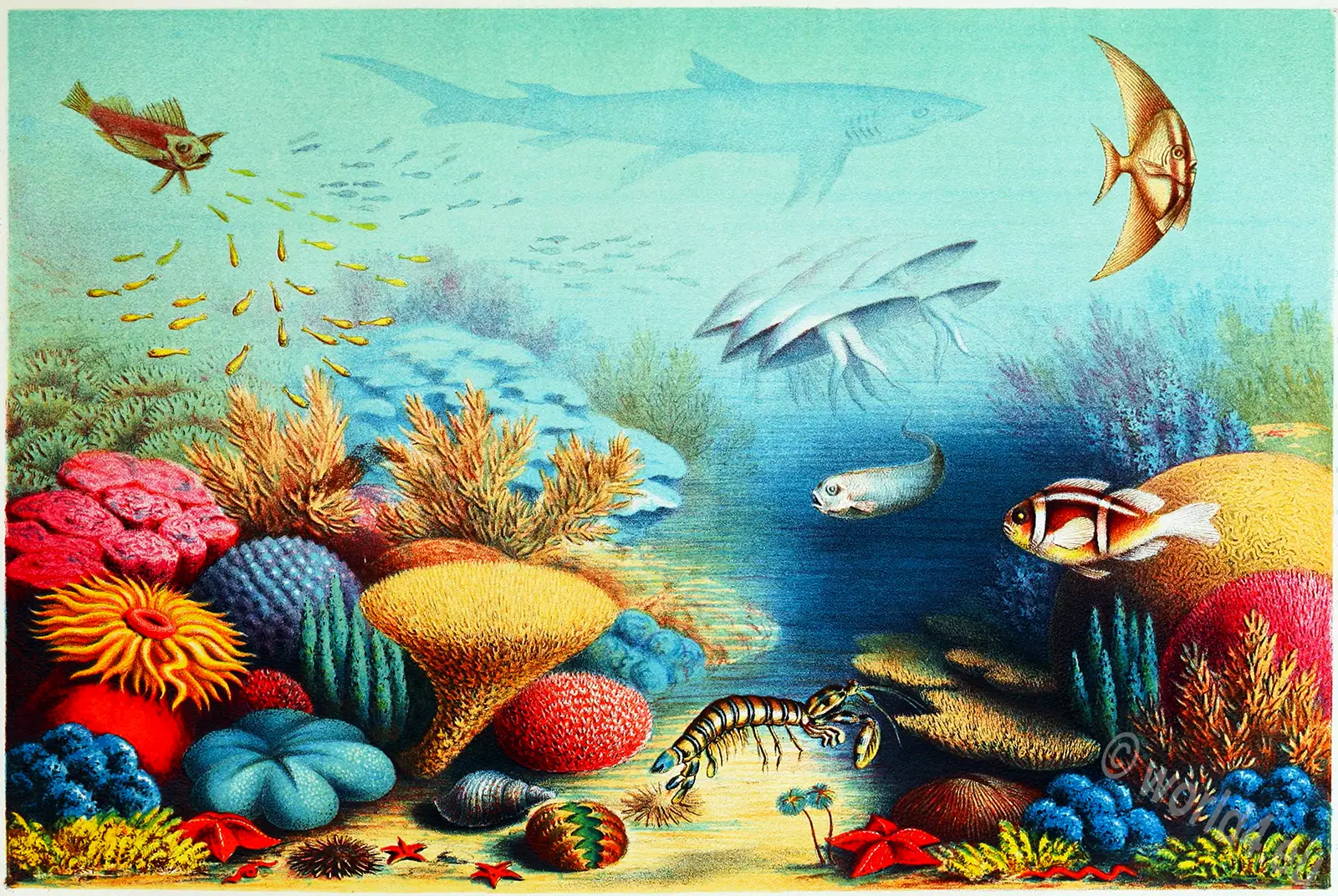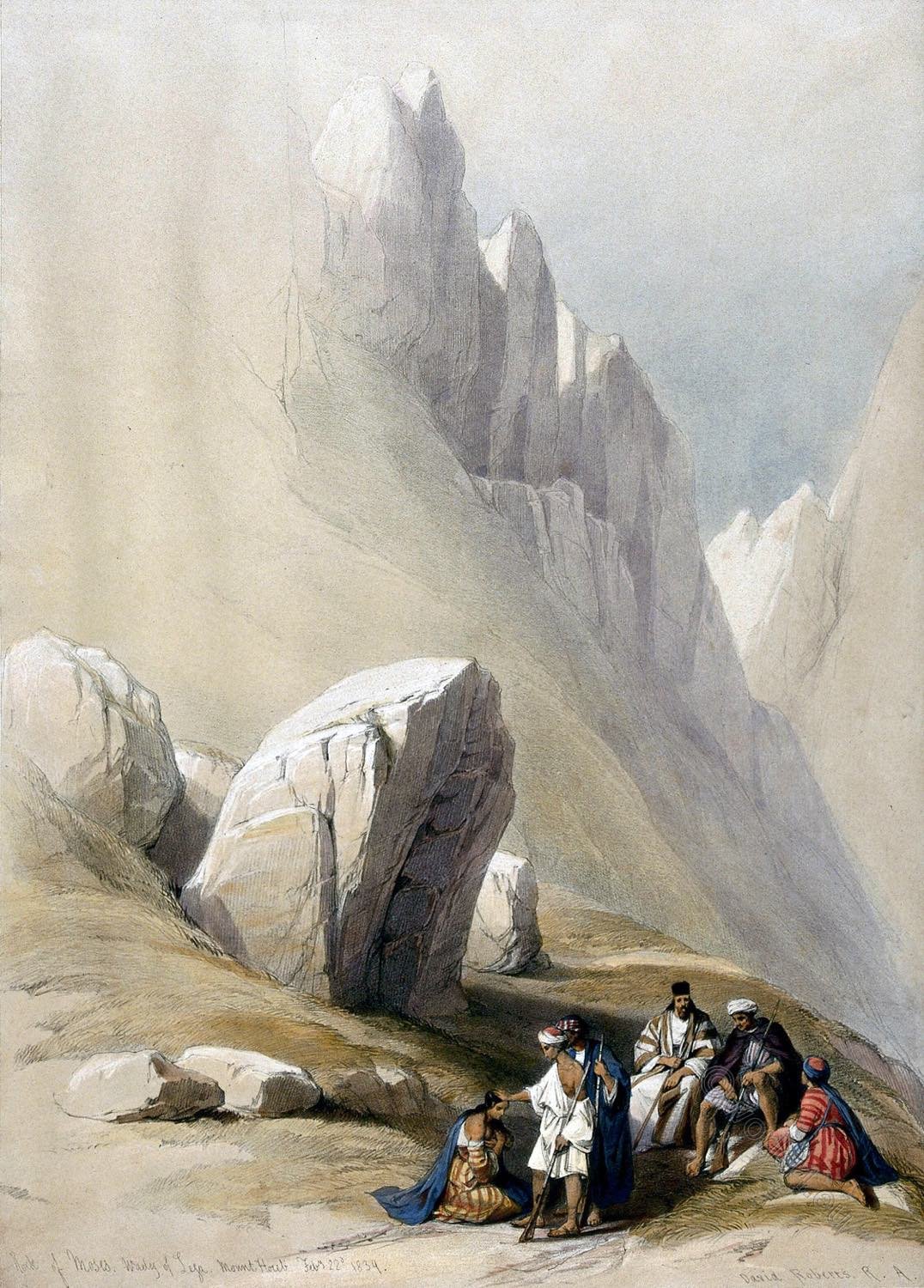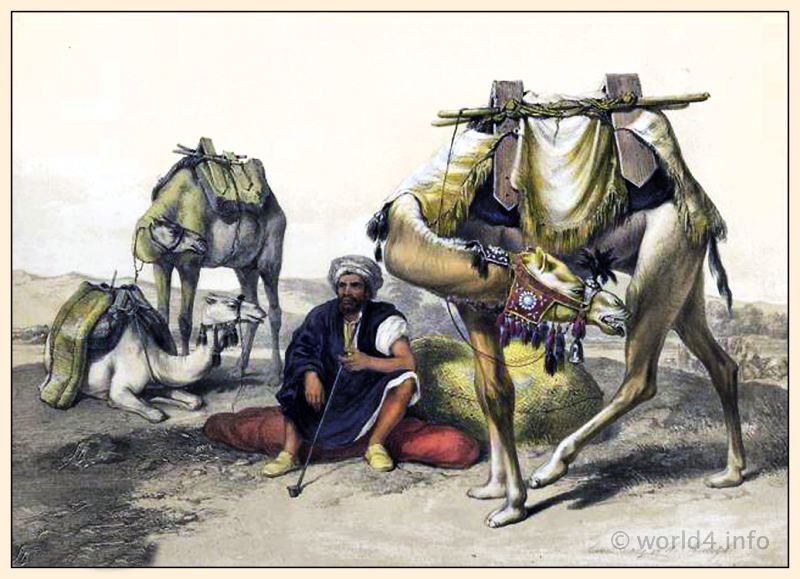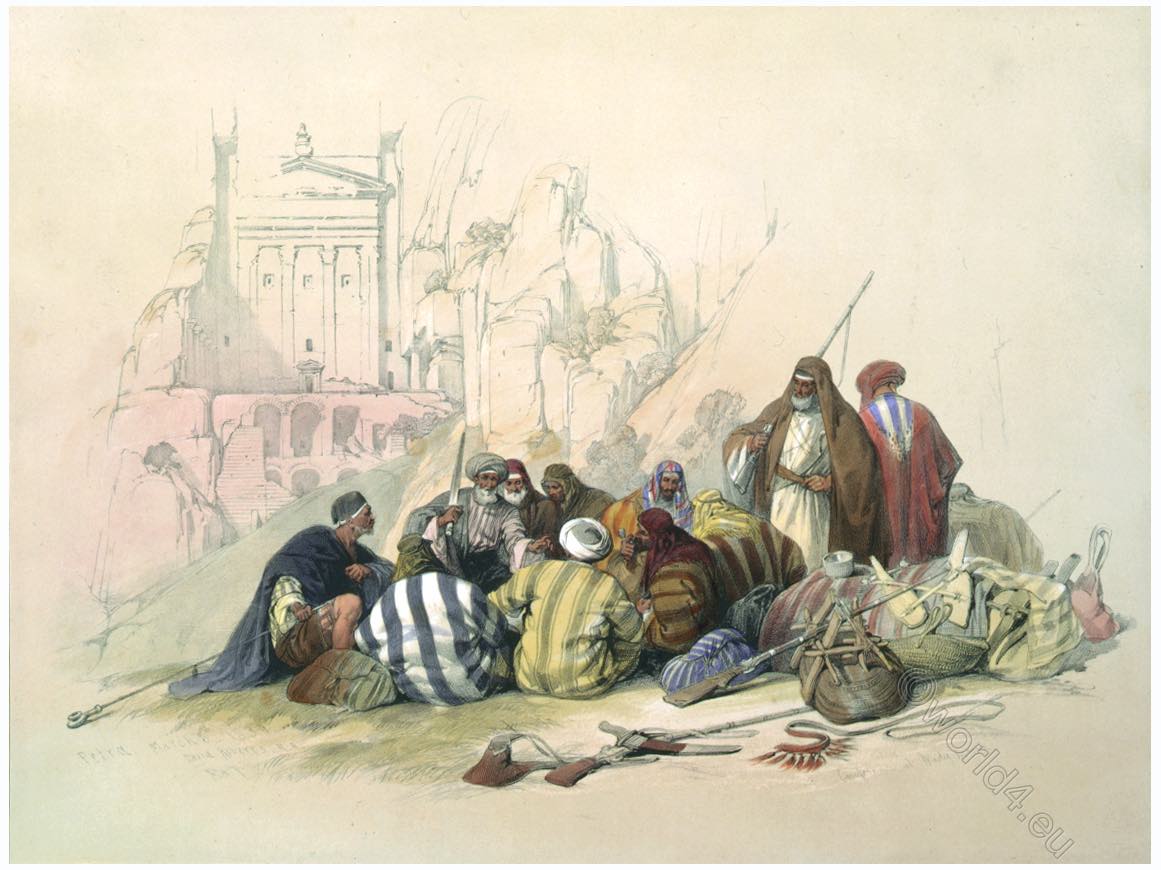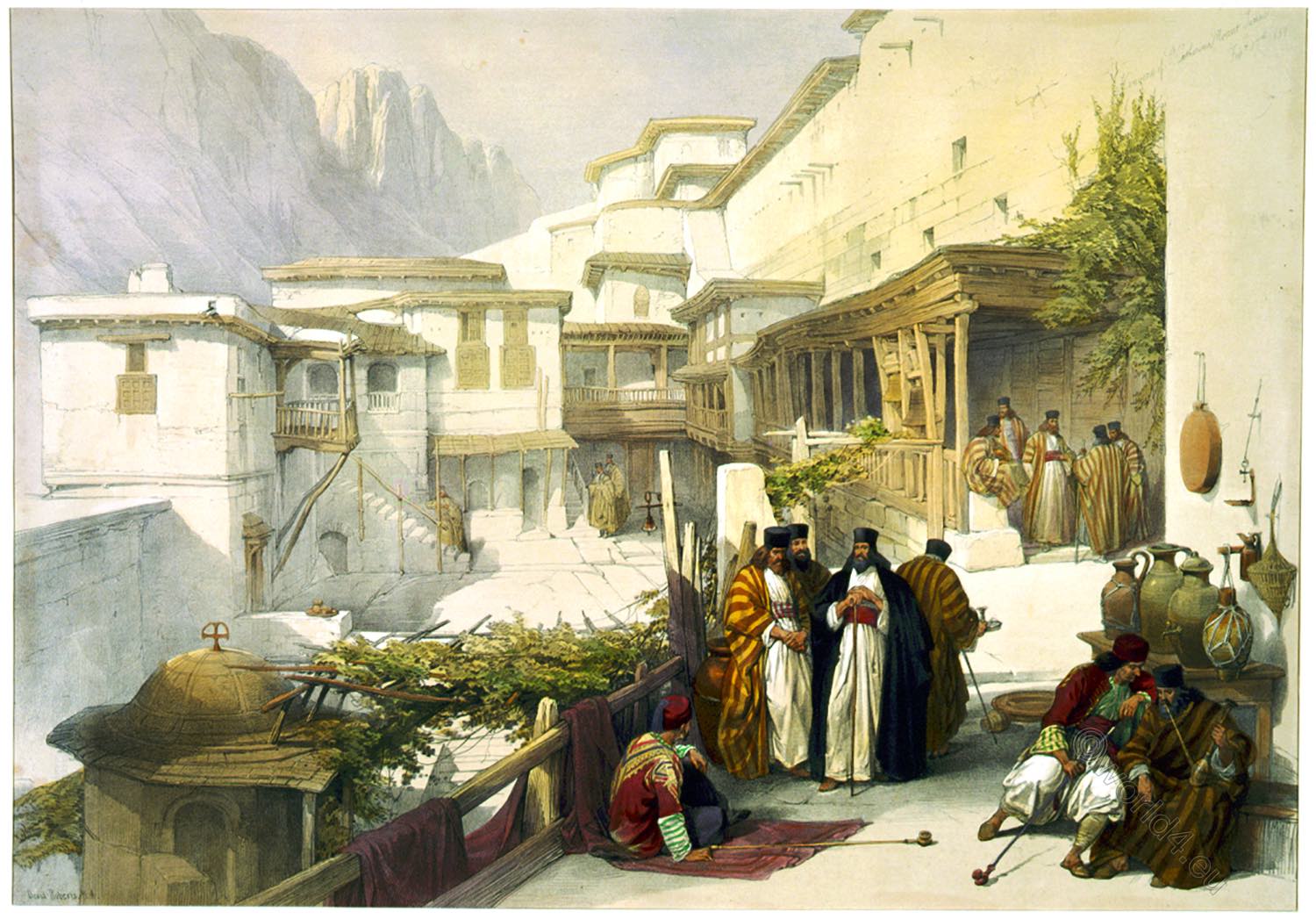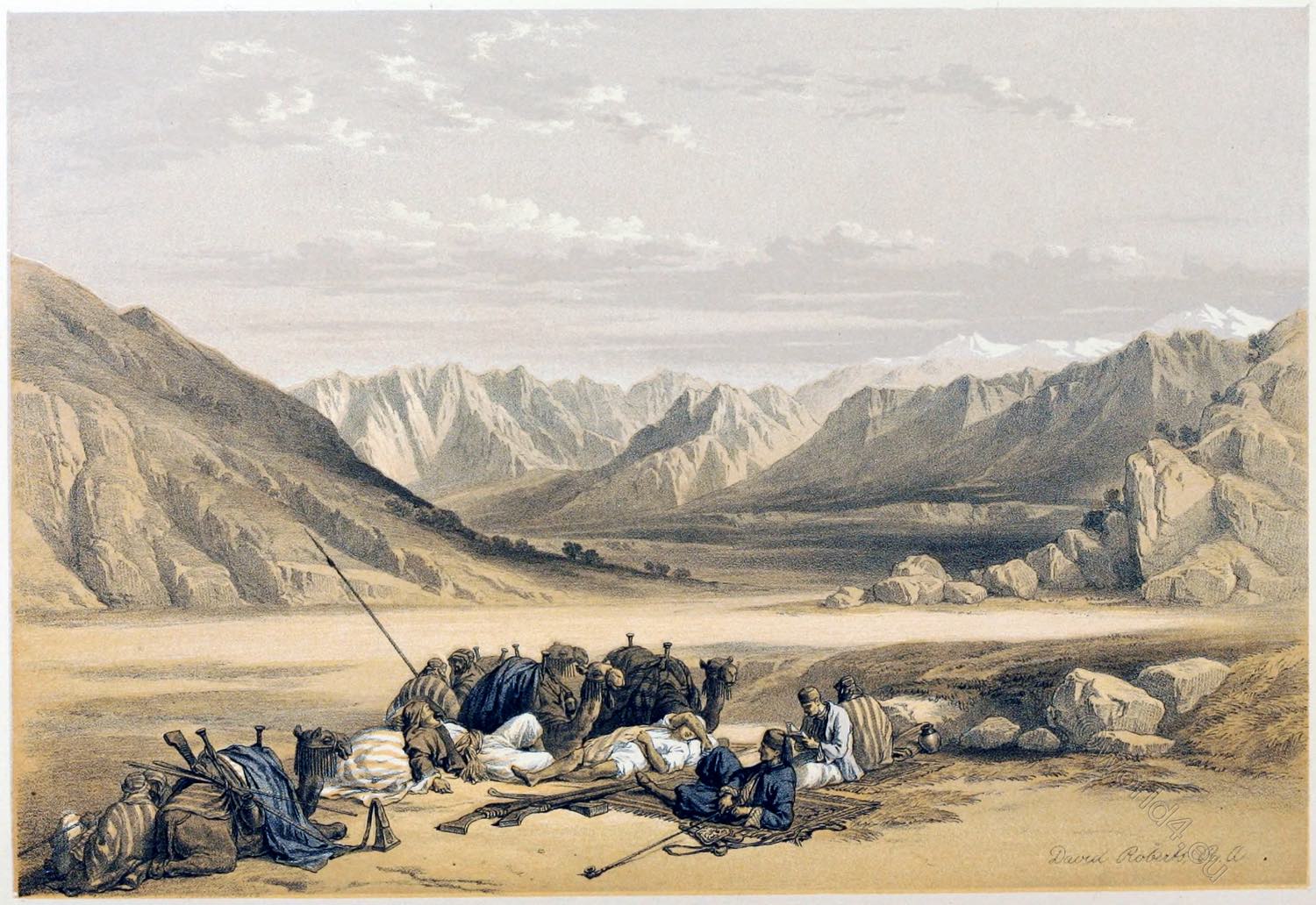
THE FIRST SIGHT OF SINAI
by David Roberts, 1839.
This View is taken from the Encampment of the Artist and his party: and exhibits the first aspect of the Chain of Sinai to the traveller approaching from Suez.
The Sketches of Sinai have been variously given in this work: for the purpose of rendering the untravelled inquirer master of the characteristic scenery of events associated with the noblest recollections, and the most stupendous interests of mankind.
The Views of Jerusalem and the surrounding countries had been presented, from all their leading points, and in all their varieties of aspect, with the same purpose; that of giving a complete conception of localities sacred to every feeling of religious homage.
Thus, to those who contemplate a journey to Palestine, this work will contribute valuable knowledge: to those who have travelled there, the revival of recollections which none would willingly suffer to pass away: and to the larger class, who from circumstances remain at home, faithful representations, not only of the country, but of the habits of the people, and the companionship of the “Children of the Desert.”
To the observer of Nature, the peninsula of Sinai is one of the most singular anomalies on the globe. It is an immense mass of mountains, without any of the discoverable purposes for which mountains seem to have been formed.
It marks no boundary between nations; its summits collect no waters to fertilize the surrounding region; and, so far as research has hitherto gone, the Sinaitic range has not exhibited any of those mineral treasures, either metal or marble, which constitute mountains a source of wealth to man.
Thus, standing in the midst of a Desert which almost prohibits human possession, pouring no river from its pinnacles on the plain, and barren alike of mineral and vegetable production, its existence remains a great physical problem.
Yet are we not entitled to regard the problem as solved by Scripture, and by Scripture alone? If it was the purpose of Divine Providence to draw the most visible line of distinction between the slavery of the Egyptian serf and the discipline of the Israelite; between a race accustomed to the grossness of Egyptian idolatry, and a nation designed as the especial depositories of the true worship; between the languor of frames exhausted by an African climate, or oppressed by the labors of the brick-kiln and the manufactory, and the temperate and hardy habits of the traveler and the mountaineer or even to teach that sense of the sublime, and that breadth and boldness of thought, which are unconsciously inspired by scenes of natural grandeur; no spot on Earth could have been found fitter to make all those powerful and essential impressions than the mountain mass of Sinai.
When we recollect the greatness of the purpose, can we be surprised at the majesty of the means? Can we contemplate the majesty of the means, without a new homage to the power of Providence? or can we rationally doubt that this purpose was designed, from the hour when the Deluge went down, the Globe was again prepared for the uses of mankind, and its divisions marked for the future dwelling of nations?
No territory of the Earth ever accomplished objects of such holiness, might, and magnitude. It witnessed a succession of miracles, on the scale of a people, and with a duration of forty years; it trained the most memorable of all nations to Law, Government, and Religion.
Its purpose was then done; Sinai became a wilderness once more: and it has never been repeopled, to this hour. Its purpose was fulfilled,—amply, once, and for ever!
Source: The Holy Land, Syria, Idumea, Arabia, Egypt, & Nubia, by David Roberts (British, 1796-1864), George Croly, William Brockedon. London: Lithographed, printed and published by Day & Son, lithographers to the Queen. Cate Street, Lincoln’s Inn Fields, 1855.
Continuing
Discover more from World4 Costume Culture History
Subscribe to get the latest posts sent to your email.

